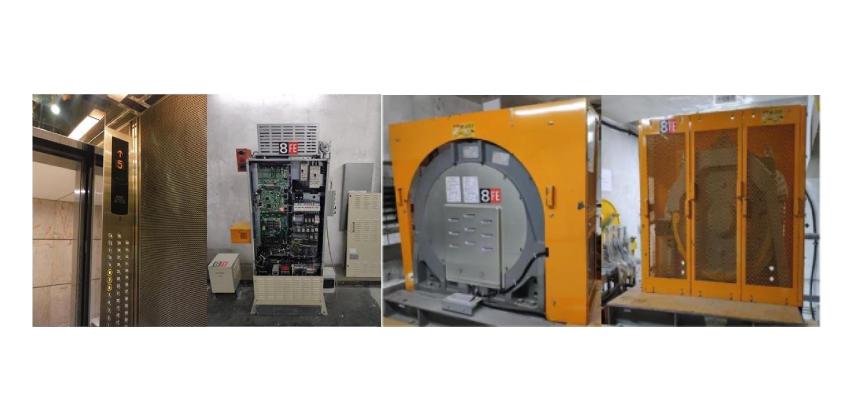In recent years, accidents involving aged lifts have occurred from time to time. According to a written reply from the Development Bureau, the HKSAR Government, in the Legislative Council on 22 May 2019, approximately 68,000 lifts are in operation in Hong Kong. 80% of them are not equipped with safety devices as required by the latest regulations.
Aged lifts refer to the installation and commissioning of lift machines completed by 2002. Although these aged lifts fulfil the technical requirements at the time of installation, they were only mounted with basic safety equipment, such as a single braking system, an overspeed governor, a safety gear, a mechanical door locking device, and buffers (see Figure 1 below).
Figure 1: Basic safety equipment in lifts1
Apart from the above basic safety equipment, new lift safety equipment also includes a double braking system, an ascending car overspeed protection device, an unintended car movement protection device, an advanced car door lock and an infrared door buffer. Some new lifts are also installed with an emergency automatic rescue device, which automatically controls the lift car to the nearest floor and opens the door to release the trapped passengers in case of breakdown.
Before deciding to carry out the lift modernisation project, the responsible person should check with the registered lift contractor or existing maintenance contractor whether there is enough space in the lift machine room for relevant works. In addition to space availability and technical feasibility, the responsible person shall also consider its cost implications, which are generally subject to the number of floors and travelling speed of the lift. To promote lift safety, the Urban Renewal Authority (URA) has launched the Lift Modernisation Subsidy Scheme to provide financial and professional support for the owners of eligible private residential or mixed-use (commercial and residential) buildings.
Although the aged lifts are not equipped with modern safety equipment, they can still be used safely through proper repair and maintenance. In order to improve the safety level of lifts, the 2018 version of the Code of Practice for Lift Works and Escalator Works requires that lifts not mounted with double braking systems, ascending overspeed protection devices, and unintended car movement protection devices, shall carry out the special maintenance twice per year. It is to disassemble the braking device and measure relevant parts, such as brake pads, solenoid plungers, and brake springs, etc., in accordance with the requirements prescribed by the manufacturer.
In addition to optimising the safety equipment, another incentive of the lift modernisation is to replace the driving motor and control system with a new permanent magnet motor and variable frequency variable speed control system (VVVF). Not only can it improve the riding comfort and operational reliability but also save 10%-20% of electricity consumption in general. To acquire further energy saving, lifts can also be installed with regenerative power converters to convert kinetic energy into electricity for the use of the buildings. Such power is generated by the dynamic braking of the motor and counterweight, while the car is travelling downwards with a heavy load or upwards with a light load. Therefore, proper maintenance and optimisation of aged lifts not only enhance safety and riding comfort but also achieve energy saving and hence environmental protection.
By Ir LEUNG Hip Shing and Ir Jonathan LEE from the Building Services Division of the HKIE
1 Picture Source: Guidelines for Modernising Existing Lifts – Electrical and Mechanical Services Department, the HKSAR Government



